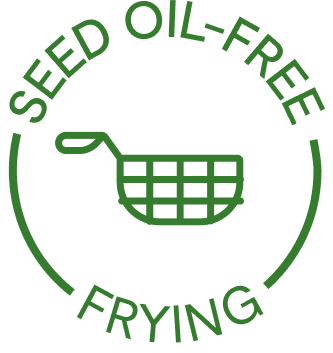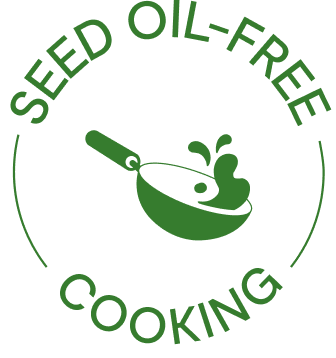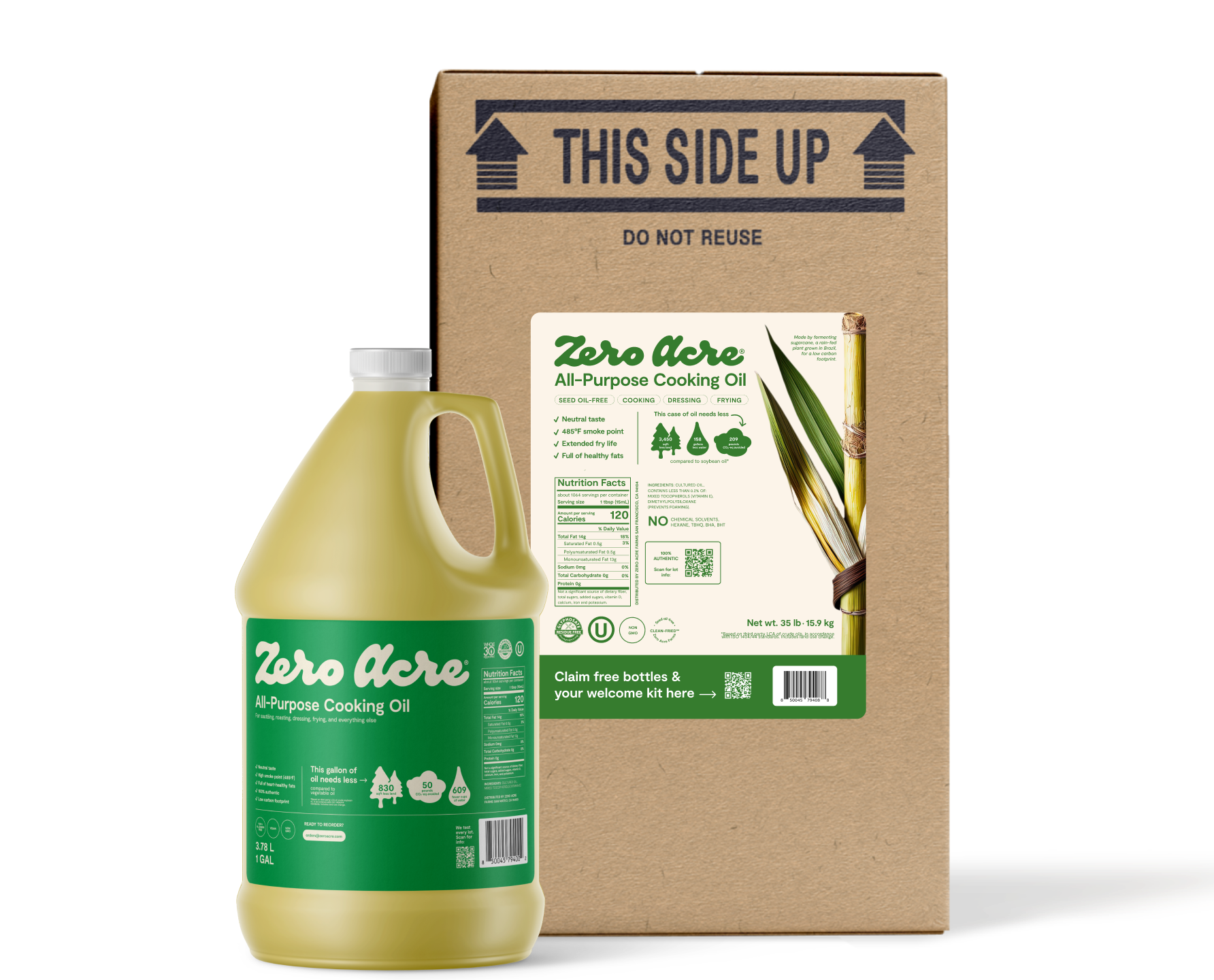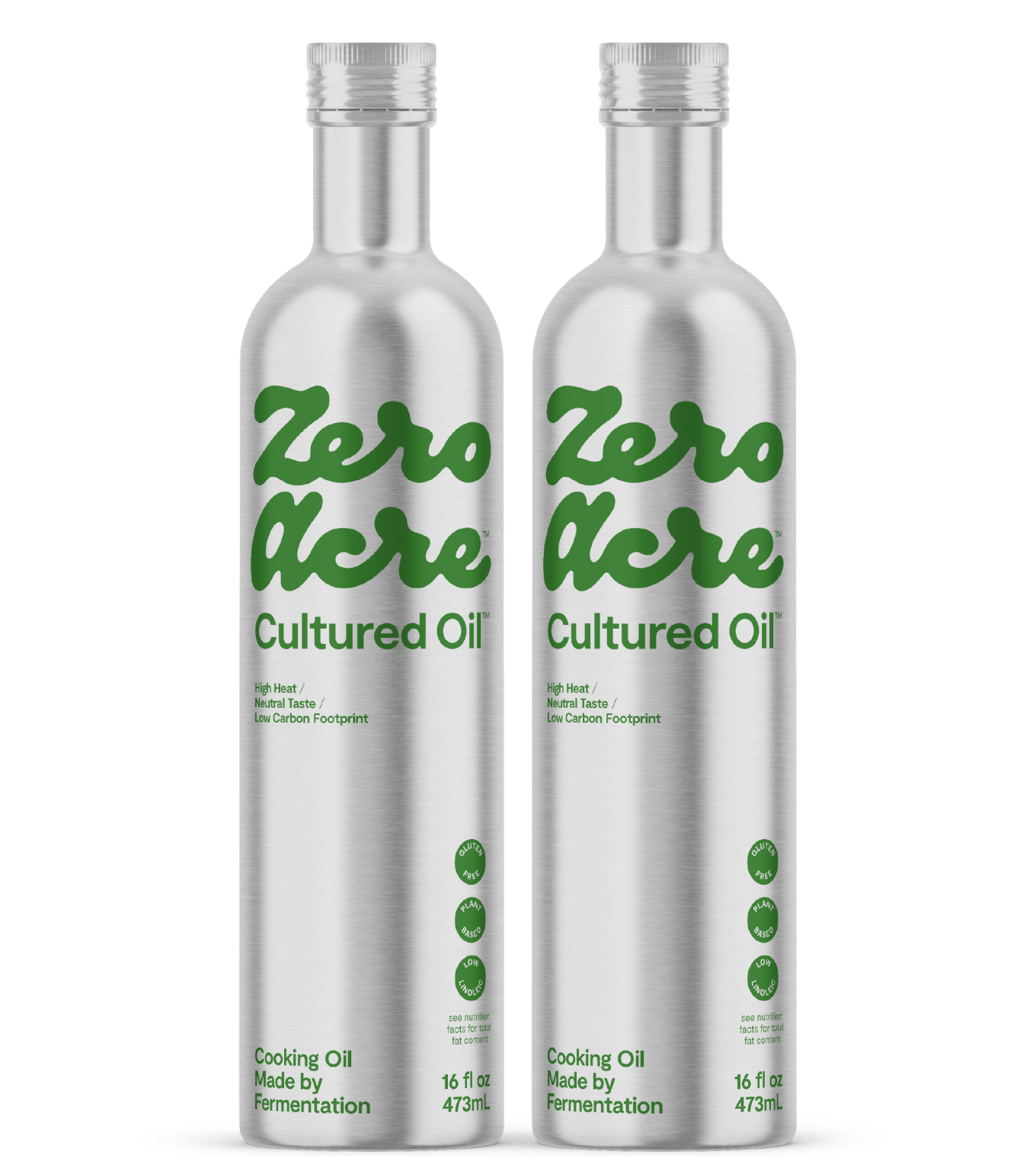WRITTEN BY: The Zero Acre Editorial Team
Article at a Glance
Canola oil was created as a lower-cost alternative to olive oil that growers could produce in North America. It’s named after the Canadian plant breeders who developed it.
Canola oil is unique in that it contains omega-3 alpha-linolenic acid (ALA) in addition to omega-6 linoleic acid. Both are susceptible to oxidation and break down into dangerous molecules during cooking.
Reheating canola oil is typical in restaurant settings, which leads to the formation of trans fats and other harmful breakdown products, according to several studies.
Canola oil can contain upwards of 4% trans fat content while still labeling the bottle as “trans fat free.”
Introduction
Canola oil (also known as rapeseed oil) is one of the most popular oils used in the United States today, with consumption rates nearly doubling over the last 13 years alone [*]. Historically, it’s had a reputation of being a “heart-healthy” fat, and is generally less expensive than other similarly marketed oils like olive or avocado oil. Over the last several decades, canola oil has exploded in popularity and is used in homes, restaurants, and packaged foods all over the world.
Does canola oil really deserve its reputation as a healthy oil? How does it stack up against other options in the cooking oil aisle? Read on to find out for yourself.
What is Canola Oil?
Canola oil is a product of the 1980’s, born into the boom of “heart-healthy” alternatives to saturated fats. While olive oil was touted as a promising solution to heart health with its high monounsaturated fat content, oil industry producers in North America were forced to grapple with their inability to grow enough olive trees to produce the olive oil necessary to supply the trend. They needed a less expensive olive oil alternative, and they found it in canola oil.
Canola oil was derived from an industrial oil known as rapeseed oil, used for centuries as a lubricant during the industrial revolution [*]. Industrial rapeseed oil is high in erucic acid, a fatty acid whose properties make it ideal for use as an industrial lubricant, but not so much as a cooking ingredient.
Oils high in erucic acid, like rapeseed oil, are generally recognized as unsafe for human consumption based on findings that show an association between erucic acid intake and the development of lesions on heart muscle fibers [*]. Recognizing the public health concerns over the erucic acid of rapeseed oil, Canadian plant breeders were quick to develop a variety of rapeseed oil with lower amounts of erucic acid [*].
This new oil needed a new name. Originally called LEAR (an acronym for Low Erucic Acid Rapeseed), food marketers opted to rebrand the oil in celebration of its Canadian origins, and “Can-ola” oil was born (Canadian oil low acid).
Is Canola Oil Vegetable Oil?
Because canola oil is derived from the seeds of the inelegantly named rape plant, it is considered a seed oil. And all seed oils are considered vegetable oils.
Canola oil is the world’s third-most produced vegetable oil behind soybean oil and palm oil [*]. Today, Canada remains the largest producer of canola oil worldwide [*].
In addition to the concerns that canola oil consumption may pose for your health, canola oil production poses serious environmental concerns.
Due to its reliance on mono-crop agriculture, excessive amounts of land and resources are devoted to oil crops like canola. Canola oil production is also closely tied to the widespread use of harmful pesticides.
In 2013, the European Union banned the use of pesticides that were commonly used on the bright yellow flowers of the canola crop [*]. The ban came after scientists linked the use of pesticides on crops like canola to an alarming 30% decline in the populations of bees and other essential species [*,*].
About 90% of canola oil today comes from seeds engineered to be resistant to herbicides like RoundUp [*]. There are a host of controversies surrounding the use of herbicide-resistant crops in the agricultural industry, from the questionable impact on humans, animals, and the planet to Roundup’s known carcinogenic properties [*].
How is Canola Oil Made?
Most canola oil is extracted from the rape seed using a process that requires chemical solvent extraction and high heat processing to produce the familiar, light-colored and mildly-flavored oil [*]. Oil manufacturers use this process to produce most vegetable oils.
During the extraction process, oil is separated from its protective seeds, and the fragile polyunsaturated fats are exposed to heat, light, and air. As a result, the delicate omega-6 and omega-3 fats can begin to oxidize or break down even before making it into the bottle, especially when exposed to high heat.
Because of canola oil’s high polyunsaturated fat content, as part of the deodorization process, some of the unstable fats are converted to trans fats. Samples of canola oil have been found to have up to 3.6% trans fat content. Since this results in less than 0.5 grams per 14 gram serving, manufacturers have been able to get away with leaving trans fat content off of nutrition labels, and may even claim “zero trans fat” on their bottles [*].
Though the FDA banned trans fats from use as a food ingredient in 2015 based on numerous studies linking them with increased heart disease risk, food companies had until 2018 to comply without penalty [*]. Prior to the ban, oil manufacturers commonly used a process of partial hydrogenation to saturate and stabilize the unsaturated fatty acids in oils like canola.
While partially hydrogenated oils are generally no longer found in the U.S. food supply, canola oil refined using high-heat could have upwards of 4% trans fat content that is able to skirt by labeling laws and pass as “trans fat free.”
Canola Oil Nutrition
Canola oil contains moderate amounts of monounsaturated fats compared to other vegetable oils, and this was its primary selling point in the ‘80s when it debuted. However, like most seed oils, canola oil also contains a significant share of polyunsaturated fats. Upwards of 25% of canola oil’s fatty acids are polyunsaturated, and predominantly composed of pro-inflammatory omega-6 linoleic acid [*].
Omega-6 is an essential fat, meaning that the body can’t produce it on its own. However, the amounts humans need to survive are much smaller than the amounts generally consumed by the average person today, and excess intake has been linked to a variety of chronic diseases [*,*,*,*,*].
While both omega-3 and omega-6 functions include brain development and cellular structure on some level, omega-6 fats are converted by the body to arachidonic acid which plays a role in our inflammatory response. In other words, too much omega-6 seems to lead to more inflammation, and more inflammation can lead to more disease [*].
Omega-3 fats on the other hand, are thought to play an anti-inflammatory role in the body. Adequate omega-3 intake has been linked to mood regulation, neural-cognitive development, reduced risk of cardiovascular disease, and reduced bodywide inflammation [*]. Experts recommend that intake of omega-6 to omega-3 fatty acids be between 1:1 and 4:1. Current average intakes are estimated to be closer to 20:1 [*].
But research also suggests that merely increasing omega-3 intake without also limiting linoleic acid isn't effective at decreasing inflammation [*]. Excessive omega-6 linoleic acid intake actually depletes tissue levels of omega-3 fats, further increasing inflammation [*].
Canola oil is unique in that it contains both omega-6 linoleic acid as well a type of omega-3 fatty acid found in plants called alpha-linolenic acid, or ALA. ALA is different from the active forms of omega-3 fats – DHA and EPA – found in most omega-3 supplements and fatty fish like Salmon. ALA must be converted by the body to either DHA or EPA before it is able to act as an anti-inflammatory agent, however, most studies suggest that less than 5% of ALA is converted to the active form in humans [*].
What’s more, the efficiency of converting ALA to DHA or EPA appears to depend on the overall concentration of omega-6 in the diet — with higher concentrations reducing this conversion by 40-50% [*]. Unfortunately, the average person today is consuming more omega-6 than ever before [*]. When ALA is not converted to EPA or DHA, it’s simply used in the body for energy without any other specific beneficial effects.
The unique high-PUFA fatty acid composition of canola oil makes it susceptible to oxidation at high temperatures [*]. Some animal studies have indicated that ingestion of oxidized omega-3 fatty acids may be harmful, increasing the risk for organ damage, inflammation, cancer, and heart disease [*].
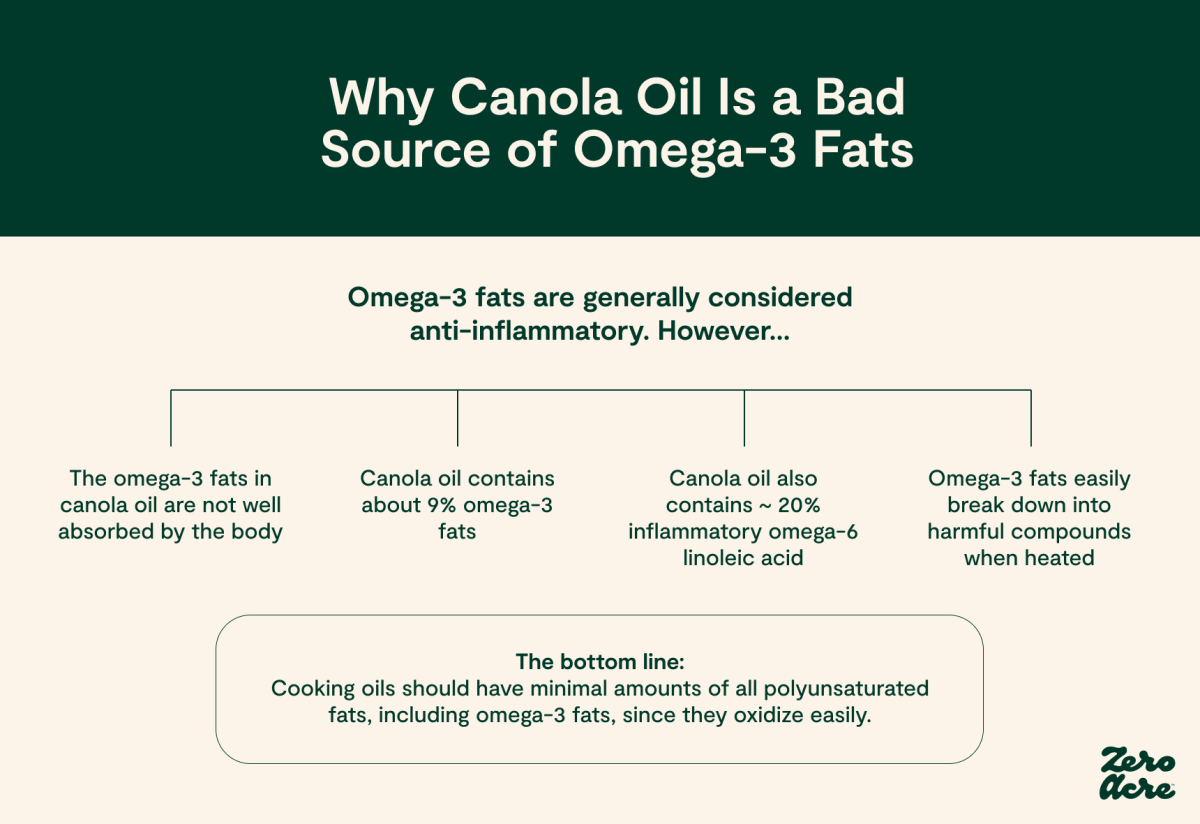
Canola Oil Smoke Point
If you’re planning on cooking with any oil, you should get familiar with its smoke point. When cooking temperatures get hot enough, cooking oils will begin to produce a visible smoke as impurities in the oil burn.
The burning or breakdown of impurities in the oil, like free fatty acids, free glycerol, and other volatile materials, can create harmful byproducts like acrolein, undesirable flavors, and a smoky kitchen [*].
Because the impurities in most commercial canola oil have been filtered out during the refining process, canola oil may not smoke as easily as an extra virgin olive oil. Most sources identify a smoke point of about 400 degrees Fahrenheit for canola oil [*].
However, due to its relatively high levels of polyunsaturated fats, canola oil starts to break down into toxic compounds long before its smoke point – at lower temperatures than refined avocado oil, and of course, Zero Acre oil.
Canola Oil for Frying
With its moderate smoke point and low price point, canola oil is often used as a frying oil in commercial operations like restaurants and home kitchens alike.
Reusing frying oil for days at a time is a common practice in restaurant kitchens, and a 2018 study found that more than 80% of randomly selected restaurants were serving food made using cooking oil that had been oxidized beyond the recommended limit for human consumption [*].
Why does this happen? Every time an oil is heated, the unstable unsaturated fatty acids oxidize and break down, decreasing its smoke point and increasing its concentration of impurities [*].
Repeatedly heating oils, particularly those high in polyunsaturated fats, has also been shown to lead to the formation of aldehydes and trans fats — a similar phenomenon to what may happen to unstable polyunsaturated fatty acids during processing, but to a much greater degree [*,*].
While canola oil you buy off the shelf may not contain enough trans fats to warrant a warning on the label, its prolonged use as a frying oil, especially in a high-volume restaurant setting, may pose a greater degree of threat to our health [*,*].
Is Canola Oil Bad For You?
Despite its origins as a healthful solution to the rhetoric around saturated fat and heart disease in the mid-1980s, canola oil’s fatty acid composition may have you questioning whether it’s actually all that healthy.
While it’s extremely difficult to link singular foods to complex health outcomes, the oil you choose to cook with is likely to play a significant role in your diet and it is worthwhile to find one you can feel good about.
Existing research is mixed when it comes to linking canola oil intake with health benefits and risks.
For instance, one 2018 cross-sectional study found an association between canola oil intake and metabolic syndrome in young adults, [*] while a 2013 review (sponsored by the canola oil industry) concluded that canola oil consumption improves markers of cardiovascular health [*].
With a food like canola oil, considering how it’s consumed is likely more important than simply studying whether or not people use it. Importantly, multiple experimental studies have linked heated canola oil with markers of inflammation in animals [*,*,*].
Heating canola oil, especially heating it to high temperatures or for a long period of time, is likely to contribute to worse health outcomes than using it as an oil in a salad dressing. You are wise to be wary of restaurant foods fried in vegetable oil, where prolonged use is a common practice.

Canola Oil Substitutes
Most people gravitate towards canola oil for its neutral taste and reputation as a healthier alternative to other vegetable oils that do not contain omega-3 ALA.
But as discussed earlier, in order for ALA to confer any benefit to human health, your body must convert it to the active forms of omega-3, DHA or EPA, which studies suggest happens at an extremely low rate [*].
Further complicating the healthful reputation of ALA, this type of fatty acid is particularly unstable and susceptible to oxidation — so once you expose canola oil to high heat, and especially if you do so more than once, most of the ALA is likely to degrade into unwanted byproducts or contribute to inflammatory free radical formation. You’re better off using a different oil altogether and getting your omega-3s from whole food sources like salmon.
For a neutral-tasting oil that can stand up to the heat without breaking down easily or morphing into a slurry of harmful oxidized byproducts, definitely opt for a low-linoleic acid cooking oil like Zero Acre oil. With 90-94% monounsaturated fat, Zero Acre oil offers even more stability than olive or avocado oil and has up to 10 times less linoleic acid than canola oil.
The Takeaway
Among vegetable and seed oils, canola oil appears to stand out as one of the least offensive in terms of linoleic acid content, with 21-25% compared to other vegetable oils that top out at upwards of 70% linoleic acid.
However, canola oil’s moderate linoleic acid content may pose serious problems in the context of modern diets which already contain unprecedented levels of linoleic acid.
Although canola oil does contain some level of omega-3s, those omega-3s are not well absorbed by the body and actually make the oil more susceptible to oxidation compared to other oils. To make matters worse, most canola oil is used for cooking and frying (especially in restaurant settings), where harmful byproducts are more likely to build up.
Given the prevalence of cooking oils, we should also consider their environmental impact. Like other vegetable oil crops, canola oil is reliant on mono-crop agriculture, which has a significant impact on land and water use and poses a threat to biodiversity.
When it comes to cooking, look for oils with high monounsaturated fat content that are stable at high temperatures. Avoid foods fried in vegetable oils at restaurants, and don’t use vegetable oils for frying more than once.
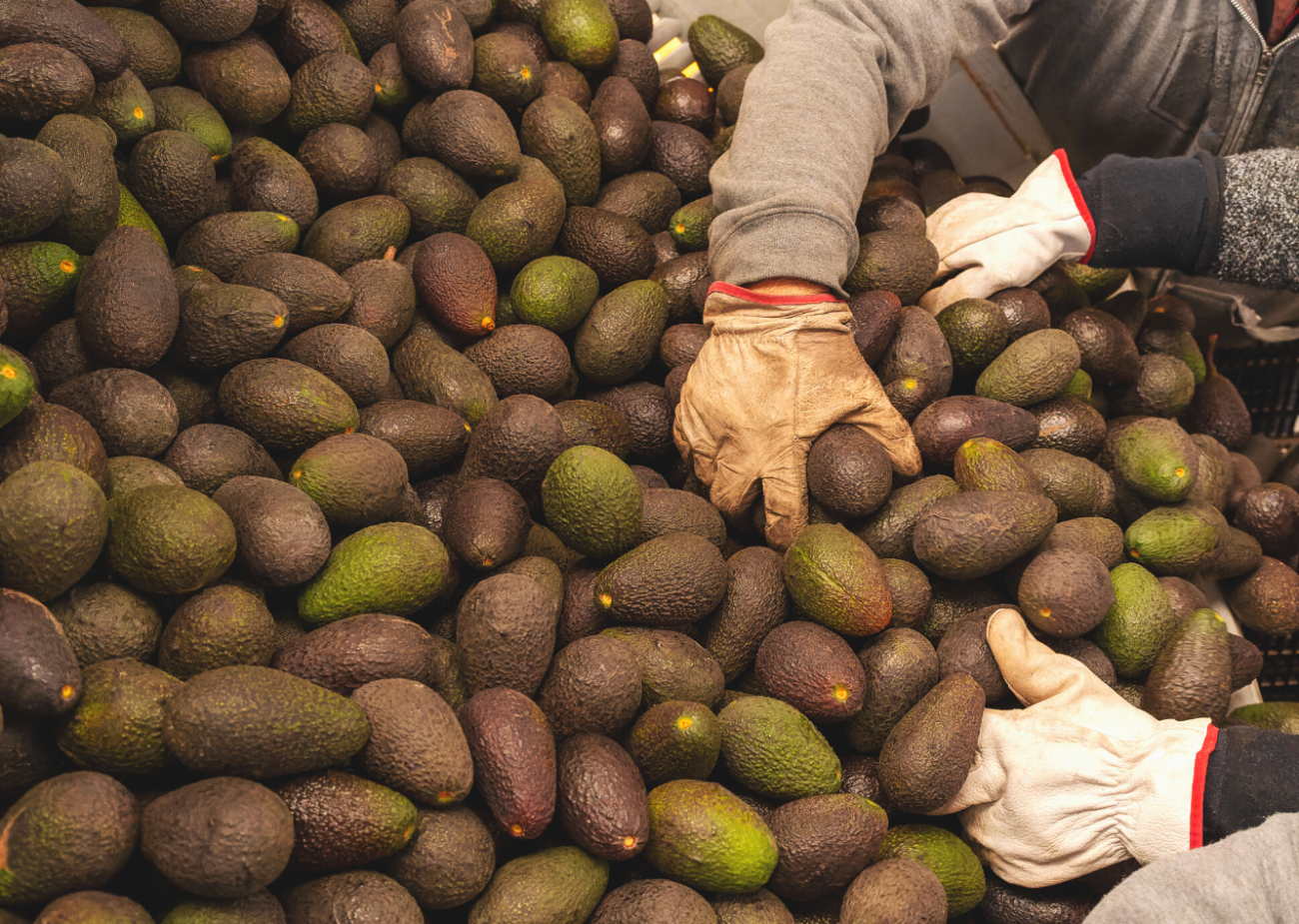
Is Avocado Oil Good For You? The Science and History Behind the Hype
Avocado oil is one of the trendiest oils to hit the shelves in recent decades whose health halo may be blinding you from considering its environmental impact.

Olive Oil: Good for You or Too Good to be True?
Olive oil needs no introduction, but perhaps, it’s time to rethink the role of olive oil in your diet and how its production impacts the environment.

